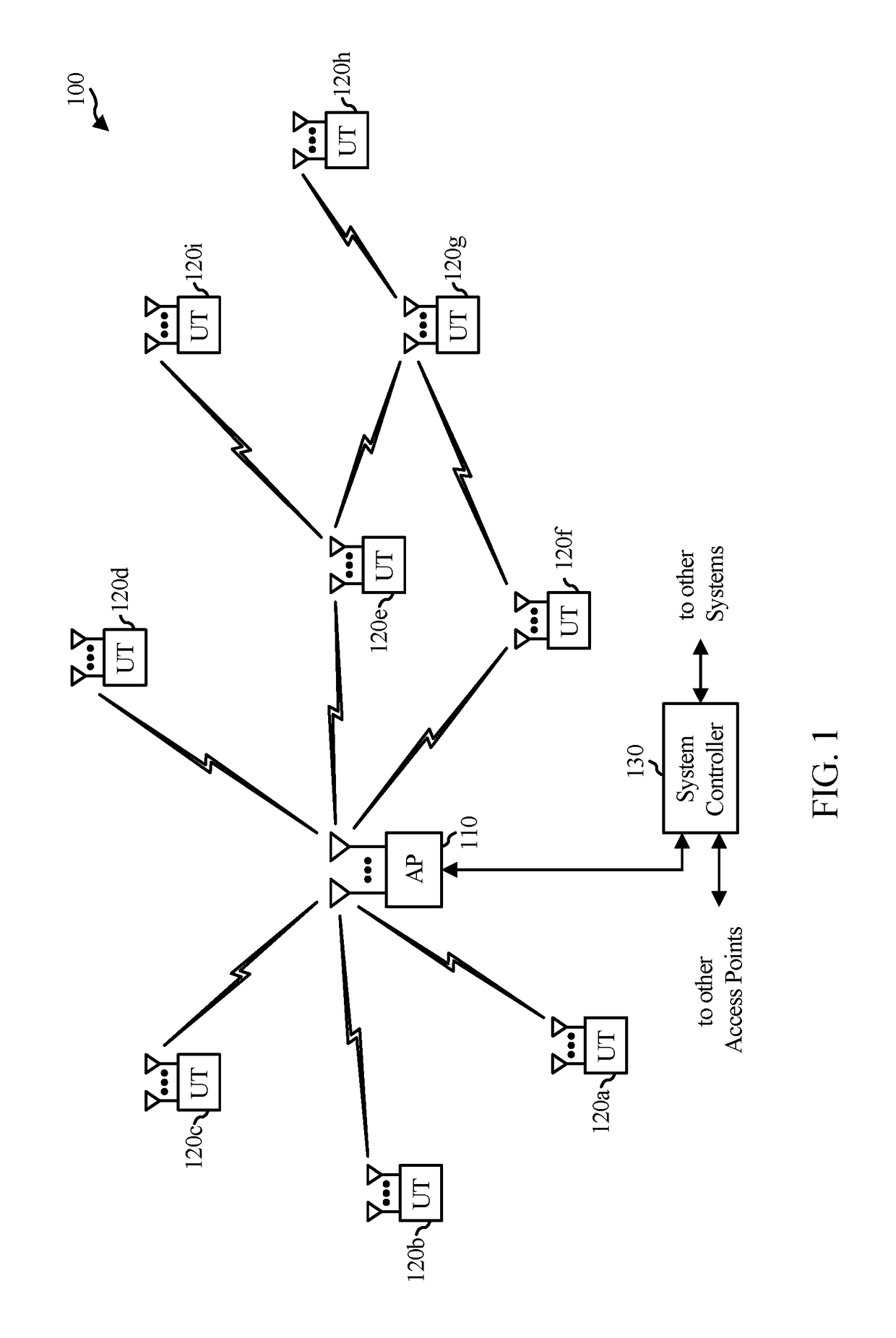Optimizing target wake-up time (TWT) operation
a wake-up time and target technology, applied in the field of wireless communications, can solve the problems of more power consumption of devices and more power consumption
- Summary
- Abstract
- Description
- Claims
- Application Information
AI Technical Summary
Benefits of technology
Problems solved by technology
Method used
Image
Examples
Embodiment Construction
[0017]A station (STA) operating according to the IEEE 802.11ah wireless networking standard may enter a low-power state (e.g., a deep-sleep mode), wherein the STA powers off one or more components, including receiver components, and does not transmit or receive until the STA wakes up. Such a STA may associate to an access point (AP) of a WLAN and be configured to wake periodically to listen for paging messages from the AP and / or transmit data to the AP. When the STA is preparing to enter the low-power state, the STA and the AP may negotiate a target wake time (TWT) when the STA will wake up. The TWT may occur periodically. By negotiating the TWT, the STA is configured to wake up periodically and listen for paging messages, and the AP is configured with times to page the STA, if the AP has data to send to the STA. If data for the STA arrives at the AP while the STA is in the low-power state, the AP may buffer the data until the next TWT has occurred, and then send a paging message to...
PUM
 Login to View More
Login to View More Abstract
Description
Claims
Application Information
 Login to View More
Login to View More - R&D
- Intellectual Property
- Life Sciences
- Materials
- Tech Scout
- Unparalleled Data Quality
- Higher Quality Content
- 60% Fewer Hallucinations
Browse by: Latest US Patents, China's latest patents, Technical Efficacy Thesaurus, Application Domain, Technology Topic, Popular Technical Reports.
© 2025 PatSnap. All rights reserved.Legal|Privacy policy|Modern Slavery Act Transparency Statement|Sitemap|About US| Contact US: help@patsnap.com



